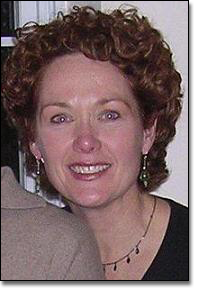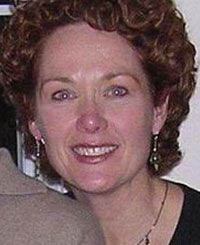Why Massage Therapists Make My Job Tough
Why Massage Therapists Make My Job Tough
By Lisa Byrne, B.S Exercise Sciences | Certified Pilates Instructor
NABBW’s Boomer Women’s Fitness Expert
 Massage therapists make my job really challenging.
Massage therapists make my job really challenging.
Some.
Not all.
I’m using this particular profession as the first I pick on. Chiropractors and physical therapists are next.
Every one of these professionals does something to the person they’re treating.
You know what that is?
It’s the doing.
They do to the person.
The person in front of them has a passive experience.
It’s the being done to I’m referring to.
Like my hair dresser. She does my hair. She cuts it, styles it, refreshes it. I do nothing except sit in the chair and let her do her thing.
That’s how it should be with hair. No hairdresser wants their client fiddling around with scissors while they’re trying to cut. That would be an awful experience. They cut, you don’t.
Massage therapists no doubt are worth their weight in gold. Spastic muscles, tense shoulders, tight hamstrings, wanting a feel good escape or that sciatic pain can all find delightful relief with these professionals.
I have a favorite local massage therapist who I refer folks in the movement studio to when they ask. Jennifer is often so booked you have to wait weeks to get an appointment. That really stinks for the person experiencing acute hip discomfort and tight back muscles from sitting all day, but that’s the way it is with her.
My beef with Jennifer and other massage therapists (some, not all) is this one particular action:
They tell the client, the body in front of them, how crooked they are, or how imbalanced one side is compared to the other, or what their muscles are doing without taking the time to help the client hone in and use their own awareness to sense what is so obvious to the therapist.
“Massage therapists treat clients by using touch to manipulate the soft-tissue muscles of the body. With their touch, therapists relieve pain, rehabilitate injuries, reduce stress, increase relaxation, and aid in the general wellness of clients.” (that’s the clear cut definition from the Bureau of Labor Statistics).
What they fail to realize is when they tell their clients what their bodies are doing the client retains no internal memory for self correcting. If the client is never asked nor encouraged to tune into their own self awareness there is no learn. The client then develops a dependency on the therapist because “she/he knows best.”
Where it makes my job particularly challenging is when I get these folks in the studio and they say
- “Jennifer tells me I lean to the left side,” or
- “Jennifer told me I don’t move my shoulder blade,” or
- “Jennifer always knows as soon as I walk into her office that my hips are crooked.”
My follow up to those statements is “Do you feel that, or have a sense of what she is talking about? She’s told you that the last 3 times. Do you notice? What are you doing to make changes yourself?”
- They’ll respond, “I don’t feel it. But she knows, she knows my body.”
- Really?
- I am flabbergasted by some responses.
- You’re IN your body. Time to start feeling it from the inside out.
My new role now with this person is the education about sensing, feeling, remembering, Moving, testing, and going slow…learning the process of somatic awareness. Going slow is the hardest part for people, but it is the most rewarding once your body, mind and brain get it.
I love my job, and it is most challenging when Jennifer’s clients come into the movement studio with an apparent dependency on what Jennifer tells them.
- I make them answer.
- I encourage them to explore.
- Sometimes I’ll spend 20 minutes on educating, showing, and guiding them how to move one shoulder blade.
- Often they hate this, but it is a vital piece to owning the lesson of your own body.
Did you ever reflect on what it feels like on the inside when your massage therapist says as you’re walking in the door “Gee Lisa, look how crooked you are today.” Chances are that you won’t think twice about it because, well… they’ll “fix” you. That’s why you’re there.You don’t have to think about it.
You’re not a Honda with a flat tire that needs fixing. Or a furnace that needs the coils repaired to heat the house. You’re a human body that has sensory and motor capabilities, to say the least. If you have routine visits to your massage therapist because you experience regular discomforts and pain consider pausing next time if your therapist tells you what you are. Check in with yourself.
Ask him/her “Hey what does that mean?” or “How can I correct that?” maybe, “Can you show me what you’re talking about and help me sense that from the inside.”
If you’re at your massage therapist for a foo-foo feel good escape disregard all this advice and enjoy the experience in la-la land. But if you’re being told things by your therapist that continually present themselves, and they concern you, inquire. You can add so much to your learn and a well lived life by embodying your own. Fine tune your awareness and thus increase the possibility of self help by stopping to ask “Hey, can you teach me how to help myself?”
Lisa Byrne is the owner and chief creative officer at Pilates for Sport, LLC in Bucks County, Pa. She has her B.S in Exercise Physiology and is a Certified Pilates Instructor. Lisa has operated her fully equipped Pilates studio since 1999 and has been in the Health and Fitness Industry for 23 years. The studio space is home to private sessions, small group training, and the outdoor circuit buffet, sure to get anyone grooving. Visitors to the movement studio span the range and include average Boomers looking for diversity; young people with Asperger’s-Autism; hard core athletes looking to ‘loosen up’; and those in need of chronic pain management through movement. Learn more about Lisa on her site, Move More Today.





